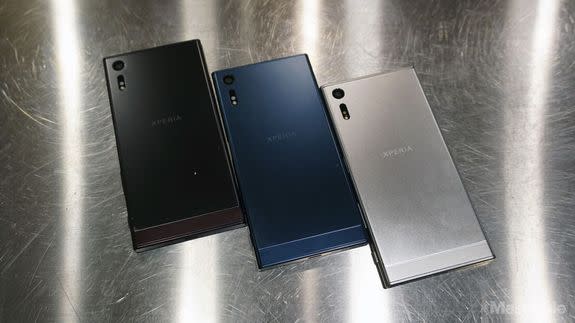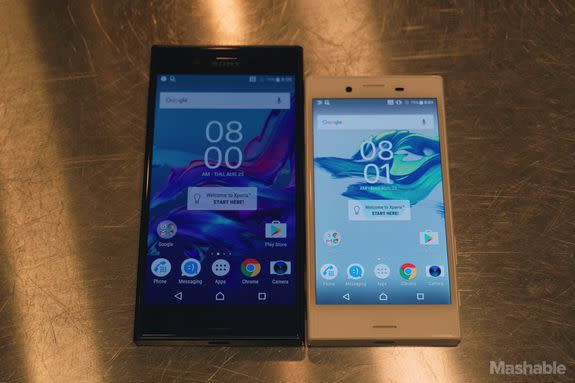Sony's new flagship Android phones still don't have fingerprint sensors

BERLIN — Can you blame Sony for not wanting to just throw in the towel for its ailing smartphone business?
As disappointing as the new Xperia X series is, Sony's pushing forward with the new Xperia XZ and X Compact, which it unveiled at IFA 2016. The XZ will launch in the U.S. on Oct. 23 and the X Compact is coming Oct. 25. (Pricing will be set later by carriers.)
SEE ALSO: How Samsung's 'edge' curves went from gimmick to iconic
Sony says the XZ merges the company's previous flagship Z-series with the recent X-series into one.

Image: RAYMOND WONG/MASHABLE
The XZ, which comes in three attractive colors including a deep metallic blue. As the company's new flagship phone, it at least ticks off the processor box with Qualcomm's Snapdragon 820 processor and 3GB of RAM and 32GB of storage (expandable via microSD). Sure, it's 1GB less than rival Android phones, but Android Marshmallow seemed to run fine in my brief time with it.
The 5.2-inch screen is a more manageable and pocketable size and the 1080p resolution screen is fine. Of course, it's not as impressive as a Quad HD screen everyone — even the Chinese phones from Xiaomi, Huawei and ZTE — is rocking these days.

Image: raymond wong/mashable
There's a 23-megapixel camera on the back with what Sony calls "triple image sensing" technology, which is supposed to autofocus quickly, predict where you want to autofocus, improve low-light photography and reduce blurry photos with its 5-axis SteadyShot stabilization system. The front comes with a 13-megapixel camera.
When pressed about any extra-long battery ratings — like the three-day battery life on previous Xperia phones — Sony wouldn't commit to any final figures for the XZ's 2,900 milliamp-hour (mAh) battery, saying they were still finalizing ratings. At least there's a USB-C port now.
Perhaps the most disappointing thing about the XZ is that it doesn't have a fingerprint sensor. It was inexcusable on the Xperia X series and it's even more unforgivable when $200 phones like the Moto G4 have a fingerprint sensor.
The little brother

Image: RAYMOND WONG/MASHABLE
The other new Sony phone is the X Compact. As its name suggests, it's a smaller device. There's no metal on this phone, just plastic designed with a ceramic-like finish to give it a touch of class.
But unlike previous Compacts, Sony didn't give it flagship specs; it's stuck with a midrange Snapdragon 652 processor. It does, however, come with 3GB of RAM and 32GB of internal storage expandable via microSD.

Image: RAYMOND WONG/MASHABLE
The 4.6-inch 720p HD screen is not groundbreaking. It has the same 23-megapixel camera on the back as the XZ with the new triple image sensing tech. The front is a lower 5-megapixel shooter.
Battery life is a surprisingly capable 2,700 mAh (for a phone of this size).
Of course, the X Compact also disappointingly lacks a fingerprint sensor as well, putting it in a tough spot held up against its competitors.

 Yahoo News
Yahoo News 